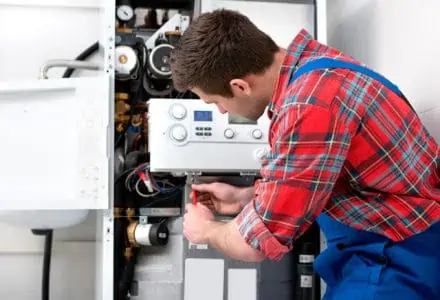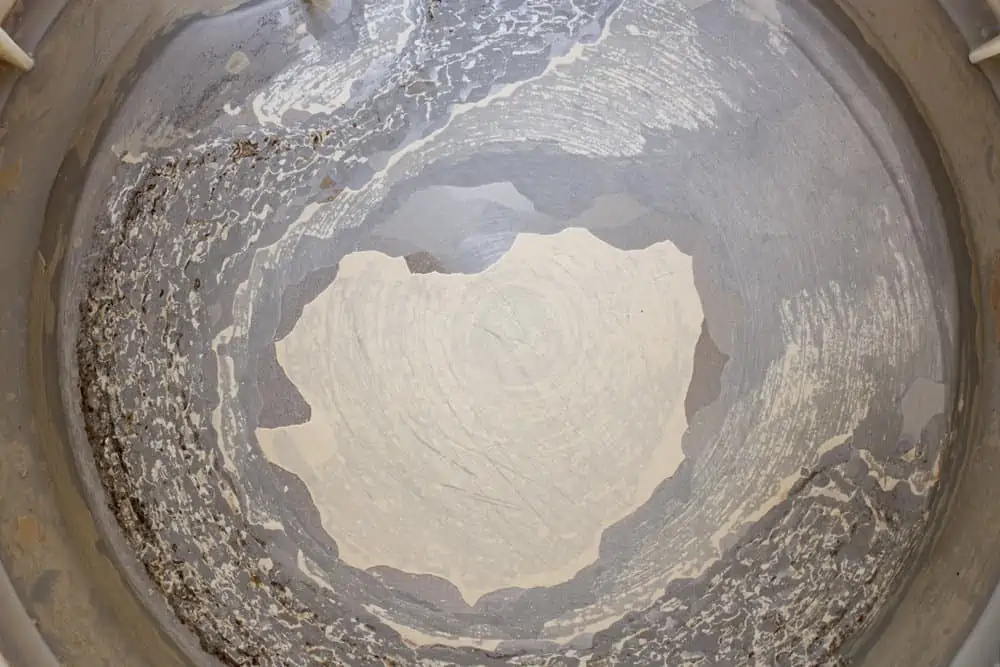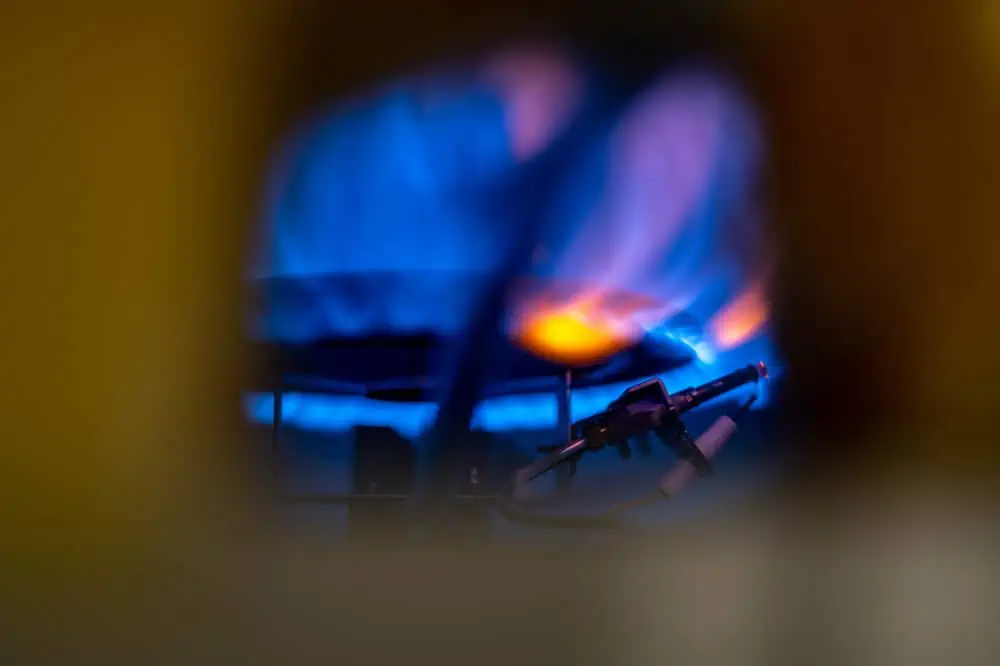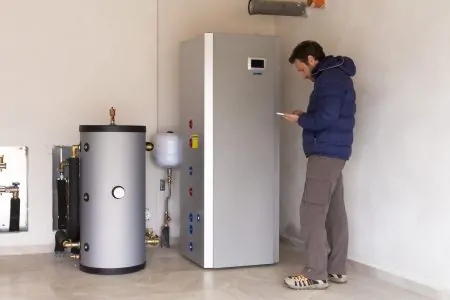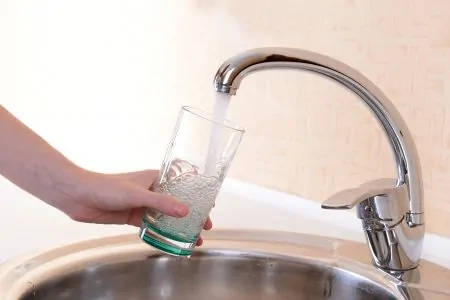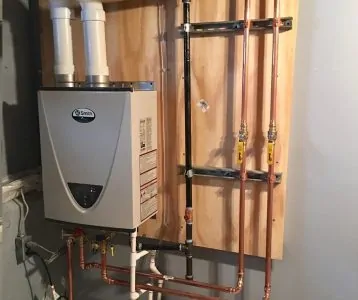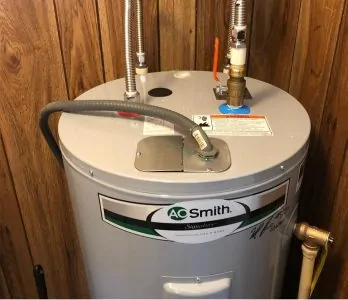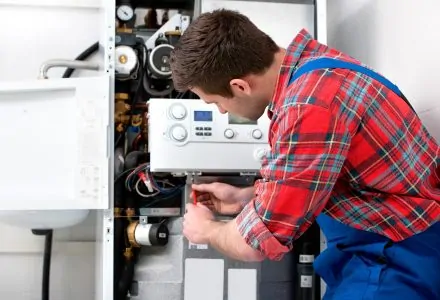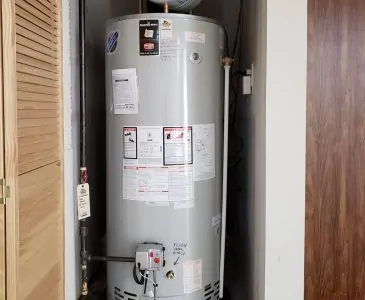Tanked water heaters need regular upkeep, like draining the tank to descale the elements. But do tankless water heaters need maintenance? The short answer is yes! Everything electrical and mechanical needs servicing to keep it in working order.
We examine tankless water heater maintenance, including a checklist of what you should inspect as part of your service schedule.
Key Takeaways
- Tankless water heaters need maintenance to prolong their lifespan, usually lasting 20 years with proper care.
- Annual maintenance is recommended for hard water areas, while soft water areas may require service every two years.
- Descaling and flushing are essential maintenance tasks to remove mineral buildup and maintain efficiency.
- Professional servicing costs between $45 and $200, but some maintenance tasks can be done by homeowners with the right skills and confidence.
Do Tankless Water Heaters Need Maintenance?
All mechanical and electrical appliances need maintenance to keep them in working order. Your tankless water heater is no exception. Water carries minerals that fur and coat the pipes and components of the heater over time.
Calcium, magnesium, and iron are just some of the minerals in water. This scaling process puts the working parts under immense strain, and eventually, the heater gives up.
How Often to Service a Tankless Water Heater?
If you live in a hard water area, your tankless water heaters need an annual service to keep them in good working order. For soft water areas, you might get away with every couple of years.
Preventative maintenance is always better than costly repairs and keeps the hot water flowing on demand.
How to Test Water Hardness
There are a few ways to check for water hardness, ranging from homemade tests to shop-bought kits. Here’s how to do it:
Homemade Soap Suds Test
You will need a clear bottle with a screw cap and pure liquid soap. Fill the bottle about a third with water from the faucet. Add 10 drops of soap to the water and shake vigorously for about 10 seconds.
Let the water settle in the bottle and watch to see what happens. You have soft water if the soap foams well, but the water below is relatively clear.
However, if you only have a thin suds layer and the water beneath is cloudy, your water is hard.
Shop-Bought Testing Kit
When buying a test kit online or at the hardware store, look for one specializing in water hardness. So many kits test for specific contaminants like radon and lead.
Fill a container with water and drop in the testing strip. You can use the color chart that comes with the kit to gauge the water hardness as it changes color.
Speak to Your Municipal Water Company
Water companies run regular water quality tests. While it may not be specific to your tap water, it measures the water quality when it leaves the treatment plant. Give them a call and ask for the results of their latest tests.
How Is Water Hardness Measured?
Water hardness measures the calcium carbonate content in milligrams per liter (mg/L). When you receive your water quality report from your utility company, check the numbers against the US Geological Society’s scale:
| Water Hardness | Calcium Carbonate Level (Mg/L) |
| Soft water | 0 to 60 |
| Moderate water | 61 to 120 |
| Hard water | 121 to 180 |
| Extremely hard water | 180 plus |
Tankless Water Heater Maintenance Checklist
Servicing your tankless water heater is one thing, but knowing what you should include in your inspection schedule is another. What components/actions should you focus on when maintaining your tankless water heater?
Descaling
Whether you own a Navien or Rinnai tankless water heater, the descaling process is pretty much the same. You must descale your water heater to avoid calcium, magnesium, and even iron building up on the heat exchanger.
Remember, maintenance is about prolonging the lifespan of your tankless water heater.
Take Note
A tankless water heater holds a fraction of the water that a tanked system does, so the scaling process is faster.
Here’s how to do it:
- Turn off the heater and cut the power at the breaker.
- Close the water supply valve.
- Open the purge valve to relieve pressure in the system. You can also open the nearest hot water faucet to the tank.
- Attach a hose to the drain valve and place the open end outside.
- Run white vinegar through the system to remove the limescale.
- Follow the manufacturer’s instructions to flush the system. This could take 45 minutes.
- Close the faucet or purge valve and disconnect the hose.
- Open the water supply valve and allow water back into the heater.
- Turn on the power at the breaker and restart the water heater.
Flushing
Flushing the system is pretty similar to the descaling process. A flush-through requires a small submersible electric pump to push the water back through the heater. Consult the manufacturer’s guidelines when performing this procedure.
Follow the steps above to shut off the power and close the supply valve. Attach the pump to the end of the water hose and place the pump into a five-gallon bucket of water.
The pump pushes the water through the system at a faster rate, causing the mineral deposits to flush away. This process should take about an hour to complete.
Pilot Light
If the pilot light gets clogged with dust and debris, the heater won’t light and heat the water. Use a small toothbrush to sweep the pilot chamber to clean the gas outlet. Use a pin to unblock the pipe if there is a blockage.
Ensure that the pilot rods are aligned. If they are bent, this could prevent the spark needed to ignite the system. Use a pair of long-nose pliers to ease them back into alignment.
Cost to Service a Tankless Water Heater
If you are serious about preserving the lifespan of your tankless water heater, you should consider getting a professional service. Most contractors offer a package as part of the installation for an additional fee. While it might cost you extra, it delivers peace of mind.
The average cost to service a tankless water heater in the US is between $45 and $200. The final bill you pay depends on the nature of the service and the extent of repair work. Some repairs could cost more than the system itself, so it may be worth fitting a new model.
When to Replace a Tankless Water Heater
If properly maintained, most tankless water heaters will last between 15 and 20 years. Inevitably, there will come a time when you will need to get it replaced. Here are a few signs that tell you the game is up for your tankless water heater.
Water Heater Makes Loud Noises
It’s not just you who creaks and groans with age; your tankless water heater does too. Components wear out, and pipes get scaled. The heat exchanger is likely to be one of the first casualties.
Every time the heater fires into life, it bangs and creaks. These are all signs that it is on its last legs.
It’s Old
Water heaters have a finite limit on how long they can function. Most will last 20 years with the correct maintenance, but sooner or later, it will give up the ghost and shuffle off to boiler heaven (or hell, depending on how well it performed).
Higher Energy Usage
Higher energy usage translates to higher costs. As your water heater ages, it becomes inefficient, losing you money and taking longer to heat the water.
The US Department of Energy thinks that tankless systems are efficient. They claim they are 24 to 34 percent more efficient than tanked heaters in homes using less than 42 gallons of water a day.
However, efficiency drops as the heater ages. Some can lose 20 or 30 percent of their original performance, which spells disaster for your bank balance.
Repairs Cost More Than the Heater
When the repair bill after each yearly service keeps creeping up, it is a sign of an aging system. If the repairs exceed the total cost of the water heater, it makes sense to swap it for a new model.
FAQs
Show Your Tankless Water Heater Some Love
Do tankless water heaters require maintenance? Of course they do! Everything needs TLC, and your water heater needs it more than most. If you treat it well, service it, and make necessary repairs, it will provide hot water for 20 years.
Now that’s longer than most marriages last! Maybe you should skip buying your partner a card on Valentine’s Day and buy one for your water heater instead.
